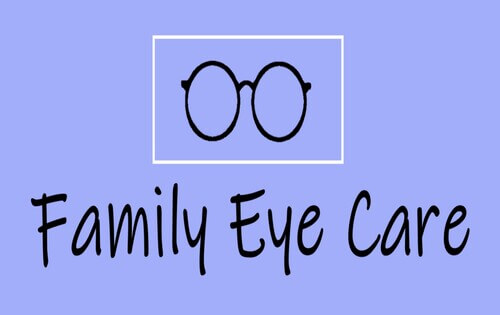Andalusia Pediatrics: Compassionate Care for Your Children
Andalusia Pediatrics: Compassionate Care for Your Children
Blog Article
The Advantages And Disadvantages of Various Refractive Surgeries for Boosted Eyecare

LASIK Surgical Procedure
LASIK surgery is a commonly done refractive procedure that intends to fix vision problems such as astigmatism, nearsightedness, and farsightedness. This medical strategy has actually gotten appeal because of its efficiency in offering people with more clear vision and minimizing their dependence on glasses or call lenses. Throughout the procedure, a slim flap is produced on the cornea, and a laser is utilized to improve the underlying tissue, remedying the refractive mistake. The flap is then repositioned, enabling fast healing and very little discomfort for the client.
One of the main benefits of LASIK surgical treatment is the fast enhancement in vision experienced by numerous clients. It is necessary for people thinking about LASIK surgery to undertake a comprehensive evaluation by an eye treatment specialist to establish if they are ideal prospects for the procedure.
PRK Procedure
The PRK procedure, additionally called Photorefractive Keratectomy, is a kind of refractive surgical procedure that aims to remedy vision issues comparable to LASIK surgical procedure. Unlike LASIK, which entails producing a flap in the cornea, PRK deals with the surface area layer of the cornea. During the PRK treatment, the outer layer of the cornea, called the epithelium, is gotten rid of to enable reshaping of the underlying corneal tissue with an excimer laser. This improving aids to remedy refractive errors such as nearsightedness, farsightedness, and astigmatism.
One of the advantages of PRK over LASIK is that it eliminates the risk of flap-related issues considering that no flap is produced during the surgical procedure. This can be helpful for individuals with thin corneas or those entailed in get in touch with sporting activities where eye injury is a possibility. However, the recovery time for PRK is typically much longer compared to LASIK, as the external layer of the cornea needs time to regenerate after the treatment. Despite the longer healing duration, PRK can be an appropriate choice for individuals seeking vision improvement surgery.
SMILE Surgical Treatment
An advanced refractive surgery strategy getting popularity in the area of ophthalmology is SMILE Surgical treatment. Tiny Cut Lenticule Removal (SMILE) is a minimally invasive procedure that fixes vision by reshaping the cornea utilizing a femtosecond laser. Unlike typical LASIK surgery, SMILE Surgery includes producing a small cut in the cornea to extract a lenticule, which results in much less disruption to the corneal framework and possibly quicker recuperation times.
One of the main advantages of SMILE Surgical treatment is its capability to deal with nearsightedness (nearsightedness) and astigmatism with high precision, resulting in excellent visual results for clients. The minimally invasive nature of the treatment additionally lowers the threat of problems such as dry eye syndrome, making it a positive choice for individuals looking for refractive surgical procedure.

LASEK Strategy
Having explored the benefits and factors to consider of SMILE Surgical treatment, an additional significant refractive surgical treatment strategy worth taking a look at is the LASEK Strategy. LASEK, which stands for Laser-Assisted Subepithelial Keratectomy, is a form of laser eye surgical procedure that aims to deal with refractive errors such as nearsightedness (nearsightedness), hyperopia (farsightedness), and click now astigmatism.
Unlike LASIK, LASEK does not involve creating a corneal flap. Rather, throughout a LASEK procedure, the cosmetic surgeon utilizes a diluted alcohol option to loosen the thin outer layer of the cornea, recognized as the epithelium.
One of the primary benefits of LASEK is that it can be appropriate for individuals with slim corneas who may not be good candidates anchor for LASIK. Additionally, LASEK typically leads to minimal post-operative discomfort and a quicker recovery time contrasted to PRK. The visual recuperation procedure with LASEK might be somewhat longer than with LASIK.
Implantable Contact Lenses
Implantable Get in touch with Lenses use a lasting vision modification option for individuals seeking a choice to typical call lenses or glasses. These lenses, additionally called phakic intraocular lenses, are surgically put right into the eye to correct refractive errors such as myopia (nearsightedness), hyperopia (farsightedness), and astigmatism. neurologist Andalusia. Unlike traditional get in touch with lenses that sit on the surface of the eye, implantable call lenses function within the eye itself, giving clear vision without the need for everyday upkeep or removal
One of the crucial benefits of implantable contact lenses is their durability. When placed, they can remain in the eye indefinitely, using regular and secure vision modification. Furthermore, these lenses can be an outstanding choice for individuals that are bad candidates for laser eye surgical treatment or that favor a reversible vision modification treatment.
However, implantable contact lenses do bring some threats, consisting of the capacity for cataracts or increased eye pressure. It is important for people considering this alternative to seek advice from with an eye treatment specialist to determine if implantable get in touch with lenses are the ideal option for their certain requirements and eye health and wellness.
Verdict
Finally, each sort of refractive surgical treatment has its own benefits and drawbacks. LASIK surgical treatment is preferred for check my reference its fast recuperation time, while PRK treatment might appropriate for people with slim corneas. SMILE surgical procedure uses minimal pain during the treatment, yet LASEK method may have a longer recovery procedure. Implantable call lenses offer an option for those who are not suitable prospects for traditional surgeries. People should talk to their eye care copyright to establish the best alternative for their private needs.

On The Whole, SMILE Surgical treatment presents a promising alternative for individuals looking to boost their vision through refractive surgery.
Report this page